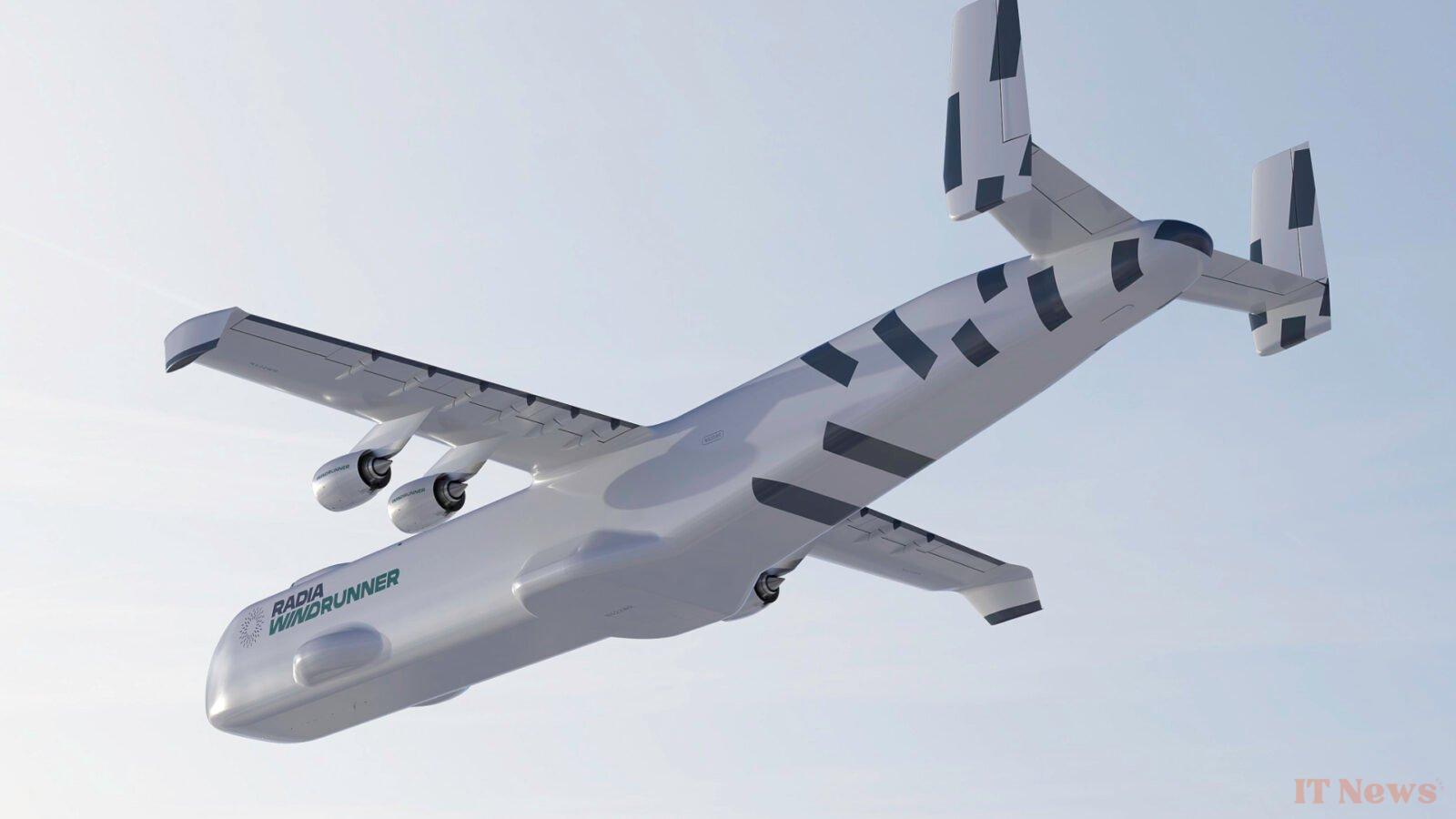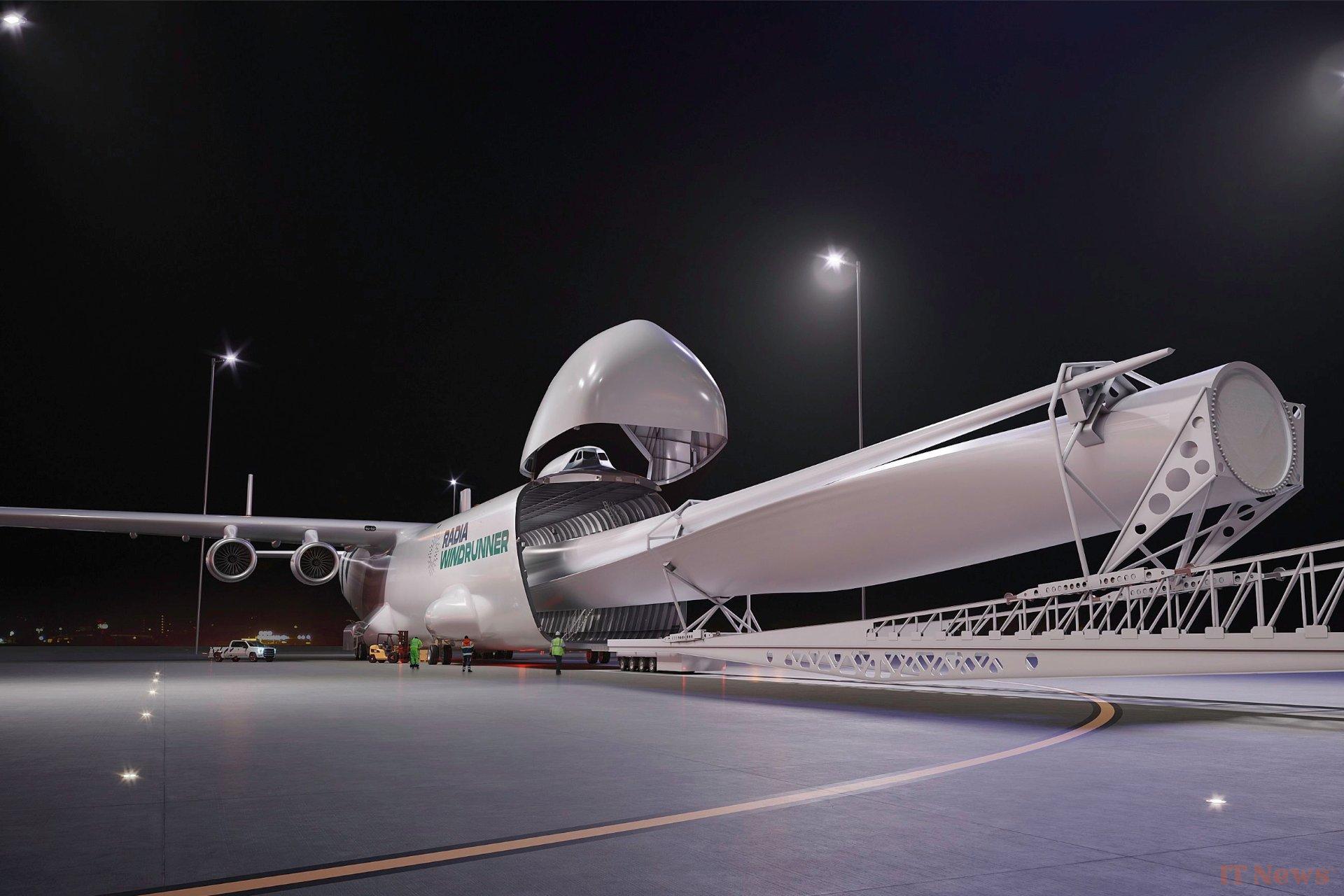Radia's WindRunner project is beginning to take shape, beyond 3D renderings. At the Paris Air Show, from June 16 to 22, the cargo plane, with a capacity twelve times greater than that of a Boeing 747, found new partners. Ahead of the summit in Paris, the American company Radia has just announced that five new companies have signed up to join the project and contribute their share. They will be responsible for the empennage, the pressurized cabin, and the integration of the avionics systems for the aircraft, which will measure 108 meters long and have a wingspan of 80 meters.
The companies in question are Aciturri Aeronáutica (Spain), Akaer Engenharia (Brazil), Astronautics (United States), Element Digital Engineering (United Kingdom), and Ingenium Technologies (United States). They join Leonardo (Italy), MAGROUP Magnaghi Aerospace (Italy), Aernnova (Spain) and AFuzion (United States). They will be responsible for the production of all the components that will make up the final aircraft, which does not yet have a market launch date. The four partners already present in the ranks had formalized their participation in the project at the Farnborough Air Show in England.
The mind-blowing figures of the WindRunner cargo plane
As a reminder, Radia's WindRunner cargo plane is a disproportionate American project. Its goal: to develop a means of transport large enough to accommodate 100-meter-long wind turbine blades. It must meet the company's main objective: to develop onshore wind farms (on land, not offshore), thanks to an aircraft capable of landing on unpaved runways at least 1,800 meters long. Among the project's new partners, Ingenium Technologies will be responsible for the aircraft's high-lift control system, to meet the challenges of its low-speed lift.
Radia had already announced that its WindRunner project would attract an entire industry to the project, with up to 4,000 jobs created in Europe alone. Among the notable absentees from the project, however, are the French, while Italy and Spain have both allowed two companies to sign up and join the project. Akaer Engenharia is the first South American company. It will be responsible for the pressurized cabin and critical systems of the aircraft. Its boss, Cesar Silva, declared on the occasion:
"It is an honor to participate in a project that will redefine the future of global aviation. The development of theWindRunneris ambitious, and Akaer's participationreflects the confidence gained through decades of excellence and innovation." It should be noted that the Brazilian company has already participated in the development of other projects, such as the Saab JAS 39 Gripen multirole aircraft, the KC-390 military transport aircraft and even in the field of imaging satellites.
With a 7700 m3 capacity hold, the WindRunner would have no equivalent, if the project were to come to fruition. With its 80-tonne payload capacity, it will require the integration of four large-scale engines for the aircraft to take off, particularly on runways as short as 1,800 meters. Radia promotes it: "Thanks to its ability to deliver oversized components – wind turbine blades over 100 meters long, satellites, armored vehicles – point-to-point, the WindRunner opens up new access areas, reduces costs, and allows construction where it was not previously possible."





0 Comments